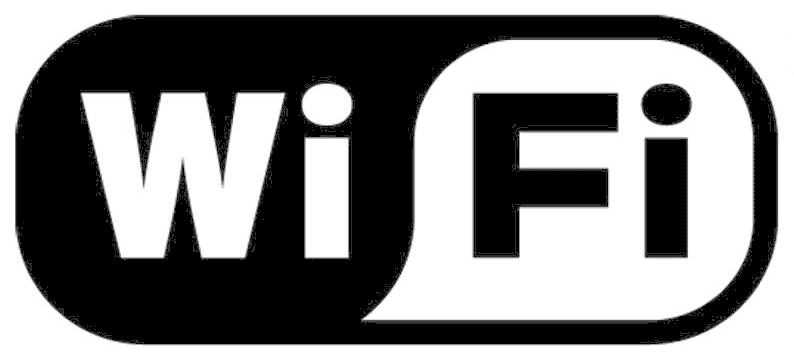Think your network is fast? Getting a gigabyte-sized movie over your local wireless network to your hard drive in a few seconds is old hat. Now there’s a network that can push a 2-hour, high-definition movie to a computer a mile away in less time than it takes to read a single word.
At the Karlsruhe Institute of Technology in Germany, a new record has been set: 40GB per second over a distance of about .6 of a mile. That’s like sending 10 high-def feature films.
What makes this possible is a combination of better hardware and the use of higher radio frequencies, in this case, 240 gigahertz.That hardware is a set of chips developed at Karlsruhe that can process signals at higher frequencies. Higher frequencies mean smaller components, since a shorter wavelength can be picked up by a smaller antenna (which is why FM and AM radios need relatively large antennas, while Wi-Fi receivers can use small ones). These chips were only a few millimeters on a side.
The high frequencies are necessary for moving lots of data — the number of bits that can travel over the airwaves is inversely proportional to the wavelength. The shorter the wavelength, the more data that can go in a given time.
A Wi-Fi network operates at 2.4 or 5 GHz, and tens of megabytes per second is not uncommon. Smartphones on the latest networks work at frequencies somewhat below that, and it’s no accident that they struggle to hit 10MB per second.
At some high frequencies moisture in the air can cause the signal to fade, but 240 GHz seems to be in a sweet spot where there’s little interference from moisture. Since transmissions can go much further than a Wi-Fi router can manage, there’s a possibility this type of transmitter would work well for rural areas where laying down fiber-optic cable — the gold standard of transmission speed — is too expensive to justify.
Researchers of the Fraunhofer Institute for Applied Solid State Physics and the Karlsruhe Institute for Technology have achieved the wireless transmission of 40 Gbit/s at 240 GHz over a distance of one kilometer. Their most recent demonstration sets a new world record and ties in seamlessly with the capacity of optical fiber transmission. In the future, such radio links will be able to close gaps in providing broadband internet by supplementing the network in rural areas and places which are difficult to access.
Digital, mobile and networked – changing media usage habits of modern society require the faster transmission of increasing volumes of data. Compared to the European standard, Germany lags behind in the expansion of the fiber-optic network, according to statistics from the FTTH Council Europe. Deploying new fiber-optic cables is expensive and difficult when there are natural or urban obstacles such as rivers or traffic junctions. Broadband radio links can help to overcome such critical areas, thereby facilitating the expansion of the network infrastructures. In rural areas they can be a cost-effective and flexible alternative to “Fiber to the Home”.
Researchers have now set a new world record in wireless data transmission: For the first time, fully integrated electronic transmitters and receivers have been developed for a frequency of 240 GHz, which allows the transmission of data rates of up to 40 Gbit/s. This equals the transmission of a complete DVD in under a second or 2400 DSL16000 internet connections. Distances of over one kilometer have already been covered by using a long range demonstrator, which the Karlsruhe Institute of Technology set up between two skyscrapers as part of the project “Millilink”. “We have managed to develop a radio link based on active electronic circuits, which enables similarly high data rates as in fiber-optic systems, therefore allowing seamless integration of the radio link”, says Prof. Ingmar Kallfass, who coordinated the project at Fraunhofer IAF within the scope of a Shared Professorship between IAF and KIT. Since 2013, Kallfass is with the University of Stuttgart, where he continues to lead the project.
High Frequencies enable Fast Data Transmission
Using the high frequency range between 200 and 280 GHz not only enables the fast transmission of large volumes of data, but also results in very compact technical assembly. Since the size of electronic circuits and antennae scales with frequency / wavelength, the transmitter and receiver chip only measures 4 x 1.5 mm². The semiconductor technology developed at Fraunhofer IAF, based on transistors with high carrier mobility (HEMT), makes it possible to use the frequency between 200 and 280 GHz with active transmitters and receivers in the form of compact, integrated circuits. The atmosphere shows low attenuation in this frequency range, which enables broadband directional radio links. “This makes our radio link easier to install compared to free-space optical systems for data transmission. It also shows better robustness in poor weather conditions such as fog or rain”, explains Jochen Antes of KIT.
Up to now, radio links were not able to directly transmit the data rates of glass fiber. This might change in the future, as the test setup of the project shows. Such a high performance system would also have the advantage of the so-called bit transparency, i.e. the signal of a glass fiber could be fed directly and without energy-consuming transcoding into a radio link. It could then be transmitted and redirected into a glass fiber. The record data from the test setup is only the beginning. “Improving the spectral efficiency by using more complex modulation formats or a combination of several channels, i.e. multiplexing, will help to achieve even higher data rates”, says Antes. This could give new impetus to the expansion of the broadband network. Maybe Germany will then no longer occupy the lower ranks compared to the rest of Europe.
More Alphagalileo







